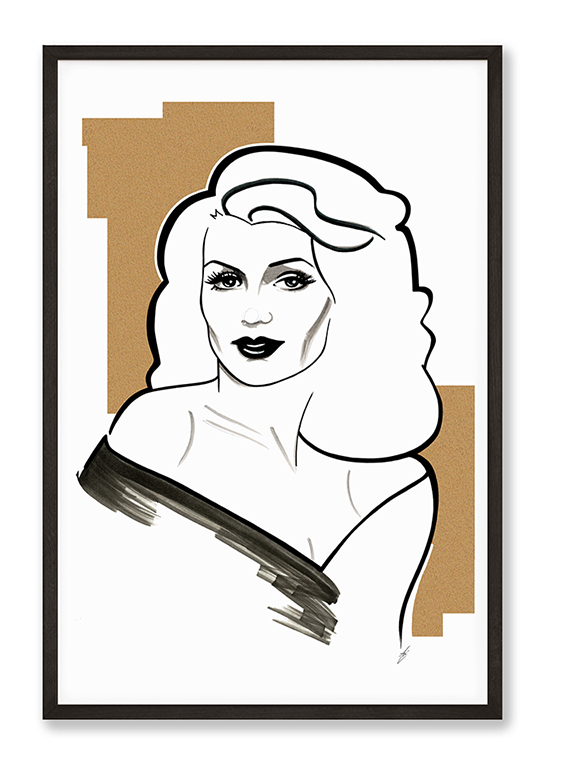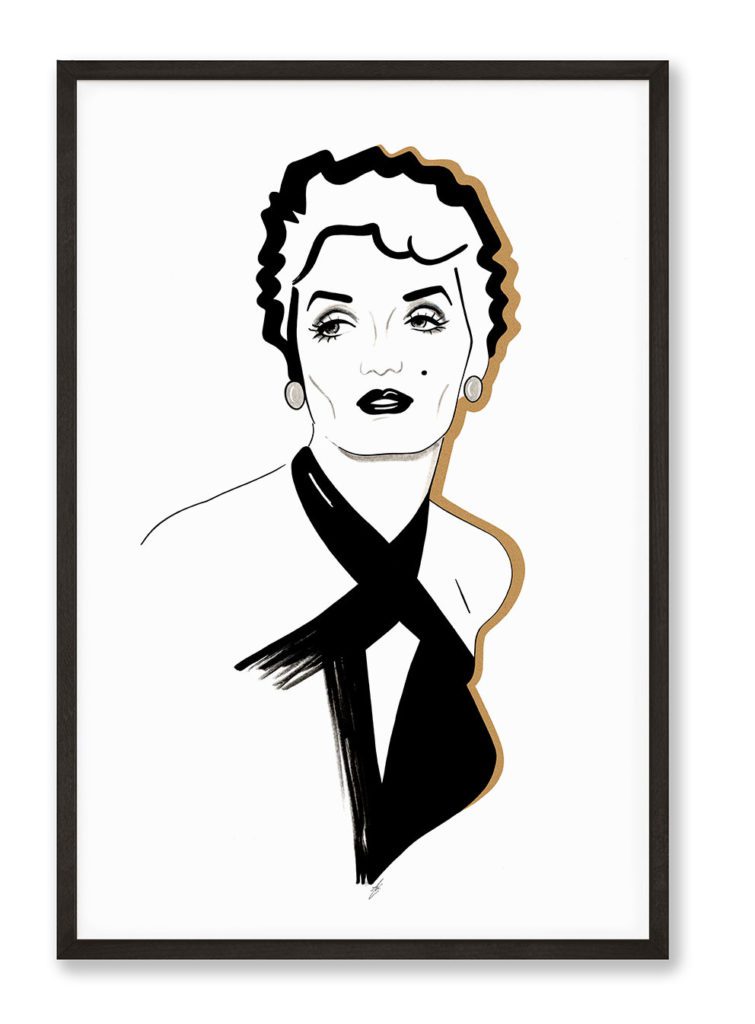Rita Hayworth
Red-Headed Femme Fatale




Hi, I'm Kat!
What I am most passionate about is to inspire you to see that your life is your own and biggest masterpiece.
Rita Hayworth was actually born as Margarita Carmen Cansino in Brooklyn, New York, on October 17 in 1918.
LISTEN TO THE PODCAST
SUBSCRIBE TO THE PODCAST
Performer Heritage
Rita Hayworth had actually been born into a family of dancers and performers. Her mother, Volga Hayworth of Irish and English descent had actually performed with the Ziegfeld Follies. And her paternal grandfather, Antonio Cansino, had a world-famous dancing school in Madrid, was a renowned classical Spanish dancer and popularised the bolero during his time. He was the one who started giving Margarita dancing lessons. She actually never was a big fan of it. She actually admitted:
“I didn’t like it very much … but I didn’t have the courage to tell my father, so I began taking the lessons. Rehearse, rehearse, rehearse, that was my girlhood.”
The rehearsing did work though – she became really good at dancing and before her fifth birthday she was already on the stage of the Winter Garden Theatre as one of the Four Cansinos. And at the age of eight, she got her first movie role in a short film from Warner Bros., “La Fiesta”.
In 1927, the Cansinos relocated to Hollywood. Margarita’s father Eduardo believed that dancing could become a thing in the movies and set up his own dancing school – where eventually he would teach later stars such as Jean Harlow.
When Margarita was 13 years old, Eduardo and she partnered in the dancing duo “The Dancing Cansinos” and Rita’s appearance was changed to give her a more mature look. Her hair was dyed from brown to black. Actually, at 13 years, Margarita was too young to work in bars and nightclubs, so Eduardo just took her across the border to Mexico and they performed in Tijuana – there, they had no legal worries and it was a popular tourist spot for the people from LA. (And if you were as much into OC California as I was – you know what happened in Tijuana). As you can imagine – working from age 13 onwards, Margarita never graduated from High School, but did complete the ninth grade at Hamilton High in LA.
She did some movie bit parts – for example in the movie “In Caliente” with Dolores del Rio. Which is quite striking as Dolores del Rio would go on to have a relationship with Orson Welles, who would after the breakup marry Rita Hayworth who was called “the next Dolores del Rio”. Funny conincidence.
At one of the nightclubs she performed at, Winfield Sheehan, the head of Fox Film, saw her, was absolutely enthralled by her performance, ordered a screen test and hired her with a six-month contract and changed her name from Margarita Cansino to Rita Cansino.
Early Years in Hollywood
At Fox, Rita did only small roles and played mostly the exotic foreigner. Sheehan’s plan actually was to make her the next Dolores del Rio – the foreign beauty with elegance and allure – so, he wanted to built her image up. These plans were crossed though, when Fox merged into 20th Century Fox – Darryl Zanuck did not see anything special in Rita Hayworth and her contract was not renewed.
In comes Edward C. Judson, a salesman and promoter who saw her potential and got her freelance work with some studios – one of it was Columbia. When studio head Harry Cohn saw her, he signed her to a 7-year contract.
Sidenote: I still am fascinated by the studio system and its workings. These contracts are really long. Would you sign a 7 year deal with your current employer? Probably not. But back then, they knew they needed time to build the star and cash in on them. Simply fascinating
At Columbia, two changes happened: Cohn wanted her not to be typecast as the exotic and the foreigner. Therefore, she changed her name to her mother’s maidenname “Hayworth” and became the Hollywood star “Rita Hayworth”. And, to make her appear more American and less Spanish, she changed her hair color to ginger red and even had electrolysis to raise her hairline and change the form or her forehead.
At Columbia, the same strategy was implemented as with Fox: She got minor roles and B-movie roles to build her up, get her some publicity. And when she finally partnered with Fred Astaire in the musical “ You’ll never get rich”, she and the movie were a full success. So much so that the two were paired again the following year. Peter Levinson, the biographer of Fred Astaire wrote of the pair that they were “absolute magnetism on the screen”. Actually, although Fred Astaire has most often been paired with Ginger Rogers, he liked Rita Hayworth better as a dancing partner”
Her raise to stardom accelerated in August 1941, when Rita Hayworth posed for a photo for magazine Life in a negligee with a black lace bodice. This picture made Hayworth one of the top two pin-up girls of the World War II years (the other one being Betty Grable). This nightdress actually was sold in 2002 for $26,888.
Stardom
In 1944, one of Hayworth’s most notable film was released – the Technicolor musical “Cover Girl”. This movie made her the first of only six women to dance on screen with Gene Kelly and Fred Astaire. She was such a gifted dancer in ballet, tap dance, ballroom dancing and Spanish routines that her talent was shown in basically every movie.
The film noir “Gilda”, which was released in 1946, also showed her performing – especially her one-glove strip to the song “Put the Blame on Mama.” This made her into the ultimate femme fatale of the day.
Funny fact: When Gilda was released, the troops at the Bikini Atoll testing the next atomic bomb would attach a picture of her to the bomb – paying homage to her and her bombshell status. Hayworth was deeply offended, but studio head John Cohn did not let her intervene or give a press conference in order to not seem unpatriotic. So, the fourth atomic bomb ever had a photograph of Hayworth on it, cut form the 1946 issue of Esquire magazine. And above it one could read the stencilled name Gilda.
After Gilda, Hayworth made a movie with husband Orson Welles – “The Lady from Shanghai” – critically a success, but a box office failure. Probably because Hayworth had cut her hair short and had bleached it platinum blonde. John Cohn, of course, was furious. He had not been notified and did not like the image change.
Hayworth set up her own production company, the Beckworth Corporation, which from then one teamed with Columbia to produce her movies. She would received a percentage of the profits on all the movies – which was really good money, seeing that the first collaboration, The Loves of Carmen (1948) was Columbias biggest moneymaker that very year.
After that her career started to get stuck – because of her private affairs.
Columbia put her on suspension when she failed to turn up for work for an “Affair in Trinidad”, because she honeymooned. Then she failed to report because she detested the script. Later, Hayworth sued Columbia to be released from the contract. But Cohn and Hayward had their respective reasons to resent the other. Hayworth felt owned and constricted – while Cohn saw his heavy investments in his A-list bombshell fall apart – especially because of her affair and marriage with Aly Kahn while she was still legally married to Orson Welles.
Rita Hayworth Giclée Print
Rita Hayworth’s Love Life
When it comes to Rita Hayworth’s love life, there is a tragic tidbit of information that might bring a bit of light into why her relationships were difficult. Rita had actually suffered abuse from her father – the one she had been touring with.
She was actually a very shy person and of course had troubles because of her childhood abuse – that’s why there was a stark contrast between her public Gilda image of the femme fatale and the real Rita Hayworth, which caused her some bitterness. In 1941 she said: “Men go to bed with Gilda, but wake up with me.”
Rita Hayworth was married five times and had multiple affairs.
Glenn Ford
Rita Hayworth and Glenn Ford had a long-term on-and-off relationship which started during the filming of Gilda in 1945. Apparently she got pregnant at one point and got an abortion. In 1960 they moved next to each other and continued their relationship for more than two decades.
Edward Charles Judson
Judson was the promoter who saw her potential when Fox let her go. He was twice her age and a mean business man. He actually took all her money that she had earned during the marriage and when they divorced she was penniless.
Orson Welles
Hayworth and Welles married in 1943 before a civil judge with just Joseph Cotten as best man and no party. They had a daughter, Rebecca and divorced after four years of marriage – because Orson Welles did not like to be married. He wanted to be free. Or so he said.
Prince Aly Khan
The following year, Hayworth married prince Aly Kahn. As she had already been established as a big star, the marriage received great press coverage, but also backlash. Because during the early days of their relationship, she was still legally married to Orson Welles. On the one side, Hayworth really wanted to establish a life away from Hollywood, but found it hard to integrate with Aly Kahn’s flamboyant lifestyle and the duties that came with the role. Also, the Kahn family was heavily invested in horse racing which Hayworth had no interested in.
Aly Kahn was known as a playboy and apparently, three years into the marriage, he was seen dancing with Joan Fontaine at the very nightclub he had gotten to know Hayworth. Hayworth moved to Nevada, to gain residency, as women could divorce their husbands in Reno, Nevada. She did file for divorce and it was eventually granted. Nevertheless, a custody fight erupted, because Yasmin, their only daughter, was supposed to be raised a Muslim when it came to her father, and a Christian, when it came to her mother.
Dick Haymes
Dick Haymes was a singer of Argentinian descent with actually no proof of American citizenship. This marriage was a total failure from start to finish! In the beginning, when she showed up at his shows, the audiences grew larger, so he got dependent on her – also, he was in bad financial shape with unpaid back taxes to the IRS and unpaid child support to his two ex wives. On top of this, the government wanted to deport him because he could not prove American citizenship. He wanted Hayworth, the national icon, to put in a good word for him – and her assuming responsibility for his citizenship formed a bond between the two that actually let to marriage. So, to make a long story short – Haymes bled Hayworth dry. She basically had no money left with paying all of his debts, and not receiving child support from neither Aly Kahn nor Orson Welles. When Haymes eventually struck Hayworth in the face in public, she packed her bags and left. For good.
James Hill
Her final marriage was to film producer James Hill – this marriage also ended in divorce citing extreme mental cruelty on Hill’s side. Interestingly, Charlton Heston (who I have my own opinions about) had written in his memoir about one night that they met for dinner. It was a “marital massacre” he wrote because “she was reduced to a helpless flood of tears, her face buried in her hands.”
Alcohol & Alzheimer’s
Rita Hayworth actually was addicted to alcohol to cope with the stresses of the business and also her private life – the marriages and the abuse, which was certainly still a trauma she had not recovered from.
She would fly into rages or break the furniture In 1976, Hayworth was removed actually from a flight because she got into a fight with the flight attendants. And she would slowly start to forget her lines and not be able to continue acting. She actually looked way older than she was because of the stresses and the alcohol.
What was diagnosed only way later way that it wasn’t alcoholic dementia she suffered from, but Alzheimer’s. That’s when she became the first celebrity face of Alzheimer’s and helped destigmatize the disease. She lived in an apartment next to her daughter in Manhattan for the remainder of her life and Yasmin cared for her. She actually died at age 68 from complications of Alzheimers.
With all my love!
xx







